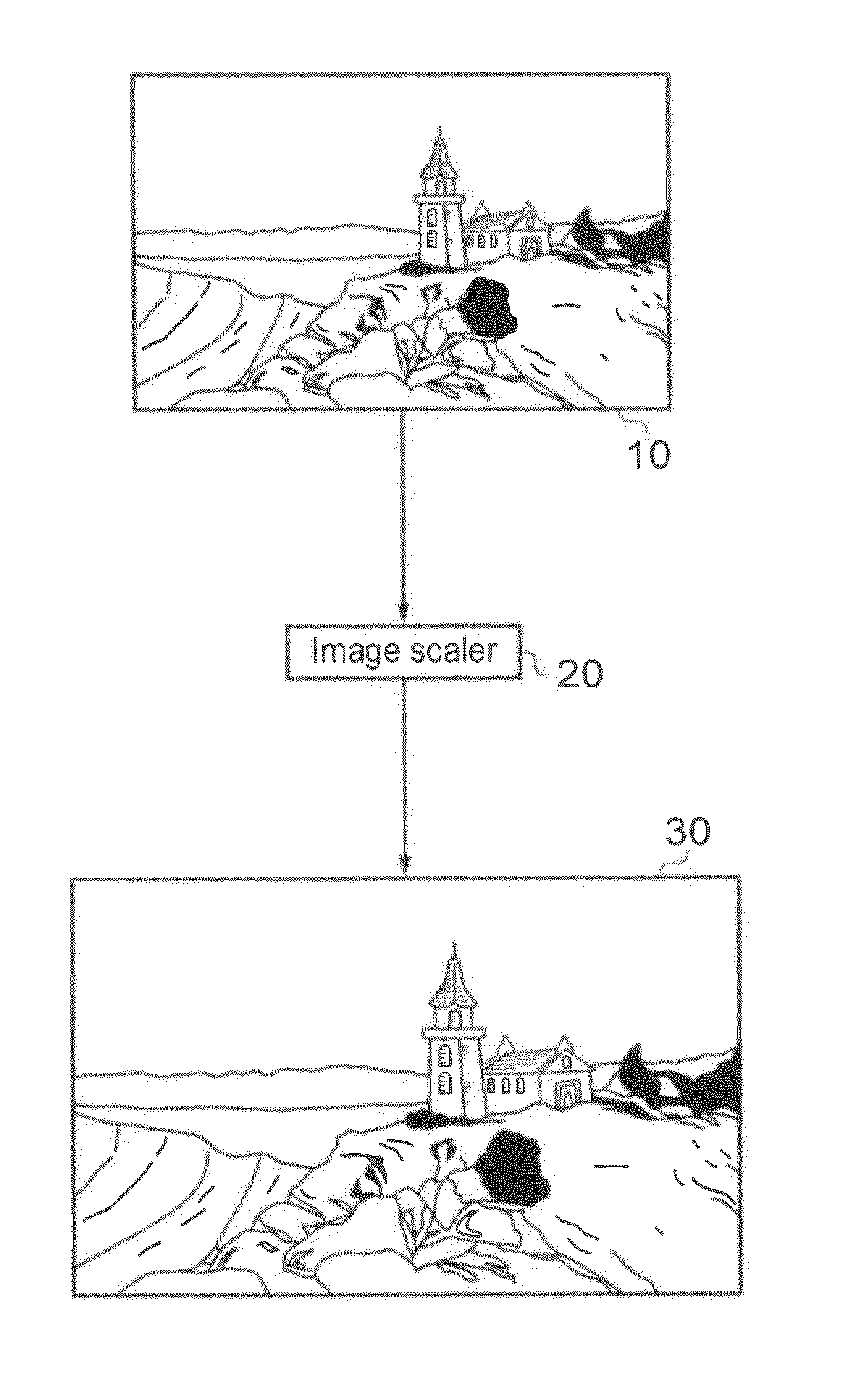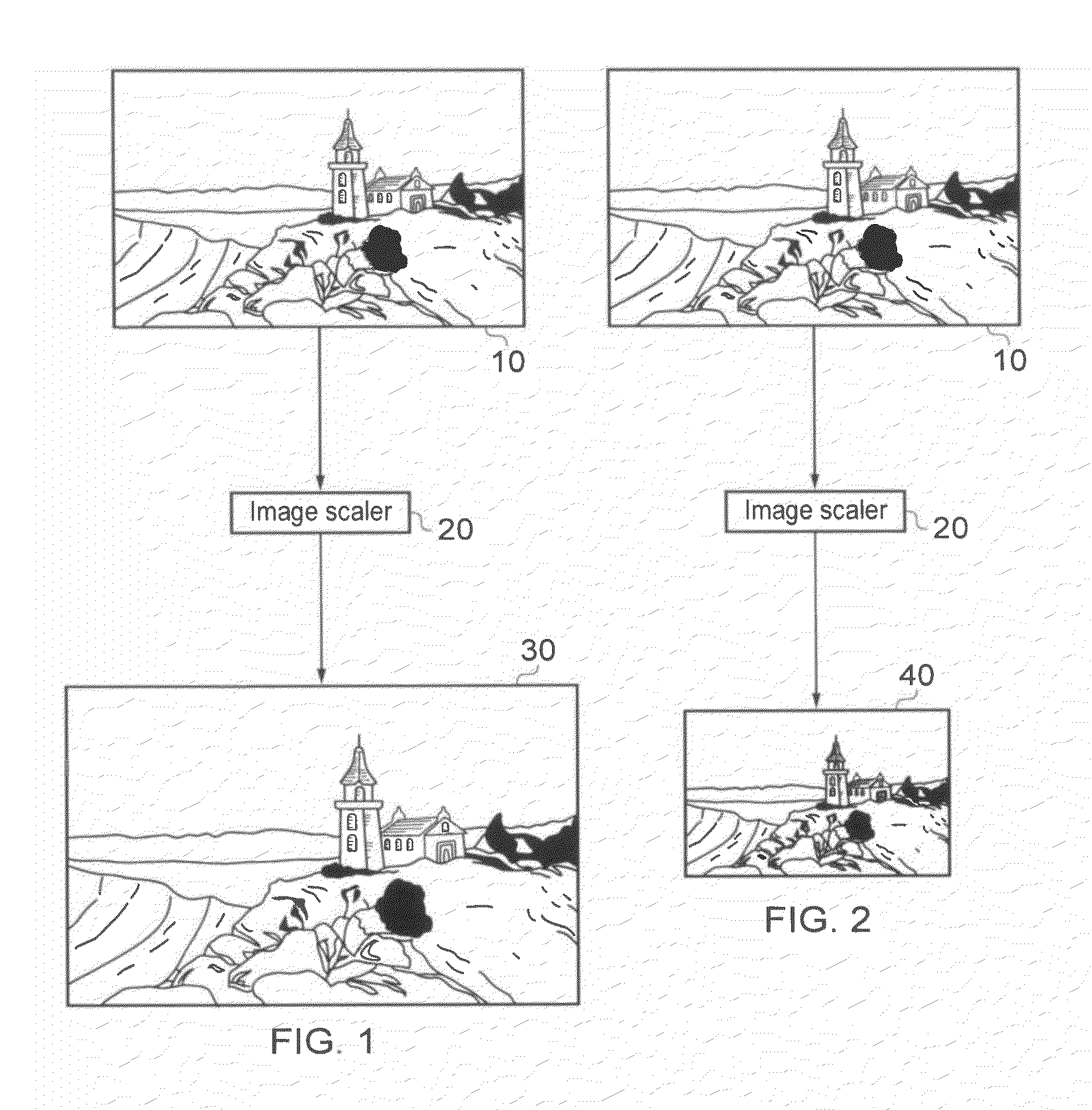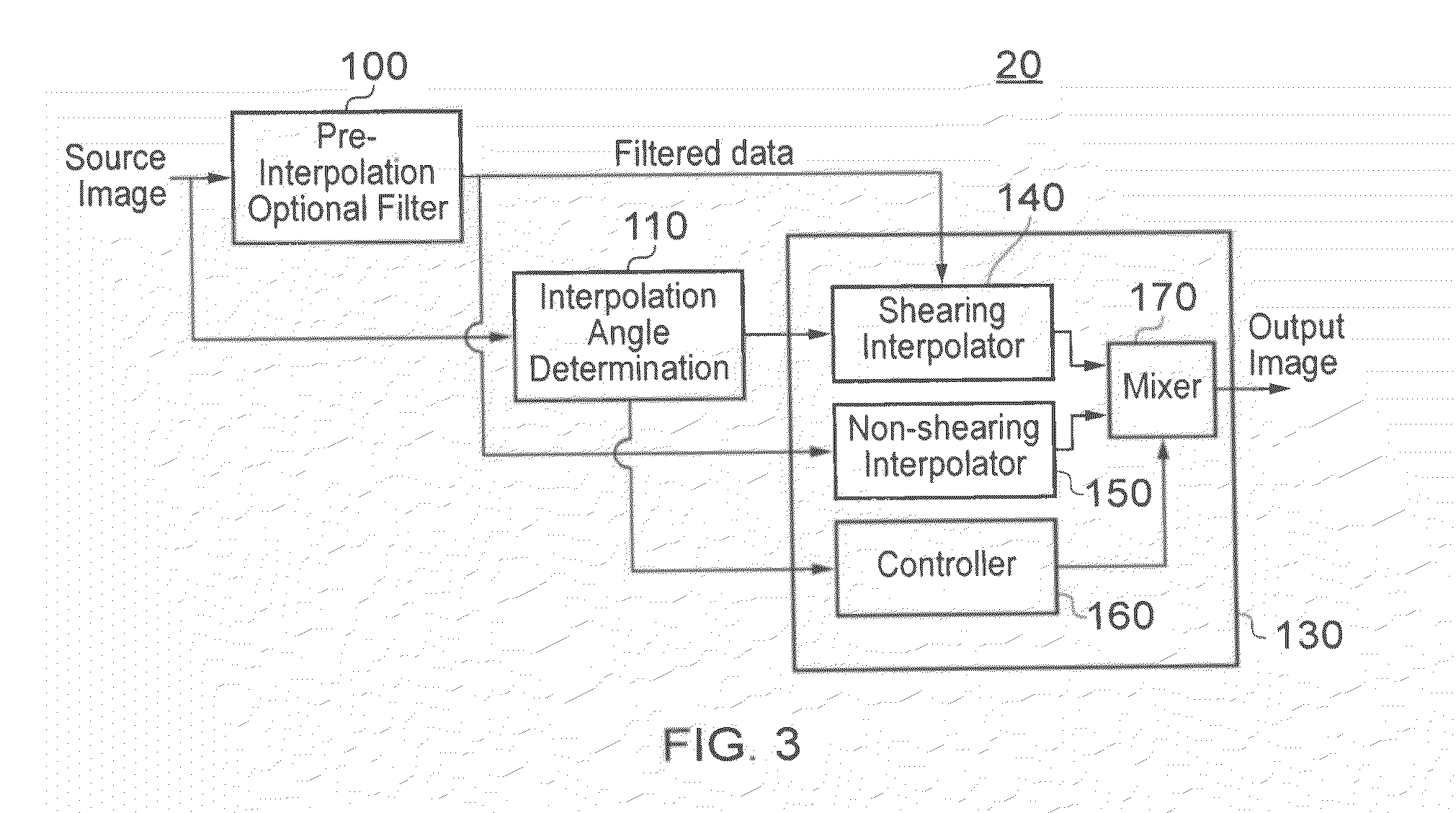Interpolation
a technology of interpolation and image, applied in the field of interpolation, can solve the problems of image feature not being detected in the resulting greyscale image, low image detail, etc., and achieve the effect of improving the detail level
- Summary
- Abstract
- Description
- Claims
- Application Information
AI Technical Summary
Benefits of technology
Problems solved by technology
Method used
Image
Examples
Embodiment Construction
[0051]Referring now to the drawings, FIGS. 1 and 2 schematically illustrate an image scaling process, as applied to a source image 10. In each case the source image (a two-dimensional array of input pixels) 10 is processed by an image scaling apparatus 20, to generate a larger output image 30 (FIG. 1) or a smaller output image 40 (FIG. 2) formed of output pixels. Here, the terms “larger” and “smaller” refer to the number of pixels in the respective output images, rather than to a format in which the images are actually displayed. So, for example, if the input image has 1920 (horizontal)×1080 (vertical) pixels, the larger output image 30 might have 2880×1620 pixels, and the smaller output image 40 might have 960×540 pixels. Clearly, these pixel numbers are just examples, and in general the image scaler 20 can operate to scale the image across a range of scale factors which may include scale factors greater than one (for image enlargement) and / or scale factors less than one (for image...
PUM
 Login to View More
Login to View More Abstract
Description
Claims
Application Information
 Login to View More
Login to View More - R&D
- Intellectual Property
- Life Sciences
- Materials
- Tech Scout
- Unparalleled Data Quality
- Higher Quality Content
- 60% Fewer Hallucinations
Browse by: Latest US Patents, China's latest patents, Technical Efficacy Thesaurus, Application Domain, Technology Topic, Popular Technical Reports.
© 2025 PatSnap. All rights reserved.Legal|Privacy policy|Modern Slavery Act Transparency Statement|Sitemap|About US| Contact US: help@patsnap.com



